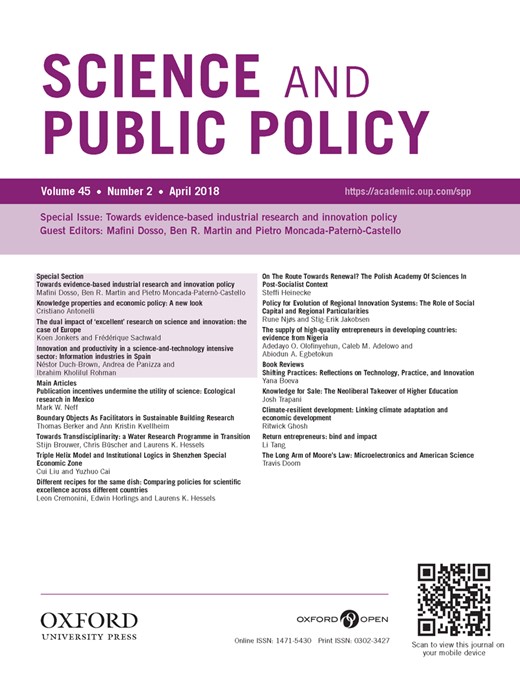-
Views
-
Cite
Cite
Cui Liu, Yuzhuo Cai, Triple Helix Model and Institutional Logics in Shenzhen Special Economic Zone, Science and Public Policy, Volume 45, Issue 2, April 2018, Pages 221–231, https://doi.org/10.1093/scipol/scx059
Close - Share Icon Share
Abstract
This paper examines the features of Triple Helix model in Shenzhen Special Economic Zone and analyses the driving forces of the featured model from the institutional logics perspective. The statist-fading balanced Triple Helix model in Shenzhen is characterized by (1) the loosened control of central government and (2) the balanced interaction of local government, industry, and university. The former character is closely related with the internal changes of state logics, i.e. the rescaling of state power due to decentralization, regional disparity, and global networks. The latter is driven by the structural overlap of state, market, and professional logics along with the transition of China from a centrally planned economy towards a market-oriented economy and the importance of innovation and learning in the knowledge society.



